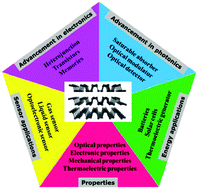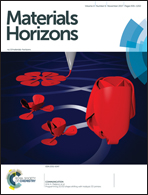Recent advances in black phosphorus-based photonics, electronics, sensors and energy devices
Abstract
In the past several years, two-dimensional black phosphorus (BP) has captured the research community's interest because of its unique electronic, photonic, and mechanical properties. Remarkable efforts have been made regarding the synthesis, fundamental understanding, and applications of BP in the fields of nanoelectronics, nanophotonics, and optoelectronics. In this review, we summarize the recent developments in the study of BP, which covers the state-of-the-art synthesis methods for preparing single-layer or few-layer BP, the recent advances in characterizing its electronic, optical and mechanical properties, and the reported functional devices utilizing such properties. Finally we discuss the existing challenges in developing BP-based nanoelectronics and optoelectronics, and describe the prospects for future BP-related research.

- This article is part of the themed collections: Materials Horizons 10th anniversary regional spotlight collection: China and Horizons Community Board Collection – Emerging 2D Materials for Energy and Electronics Applications


 Please wait while we load your content...
Please wait while we load your content...